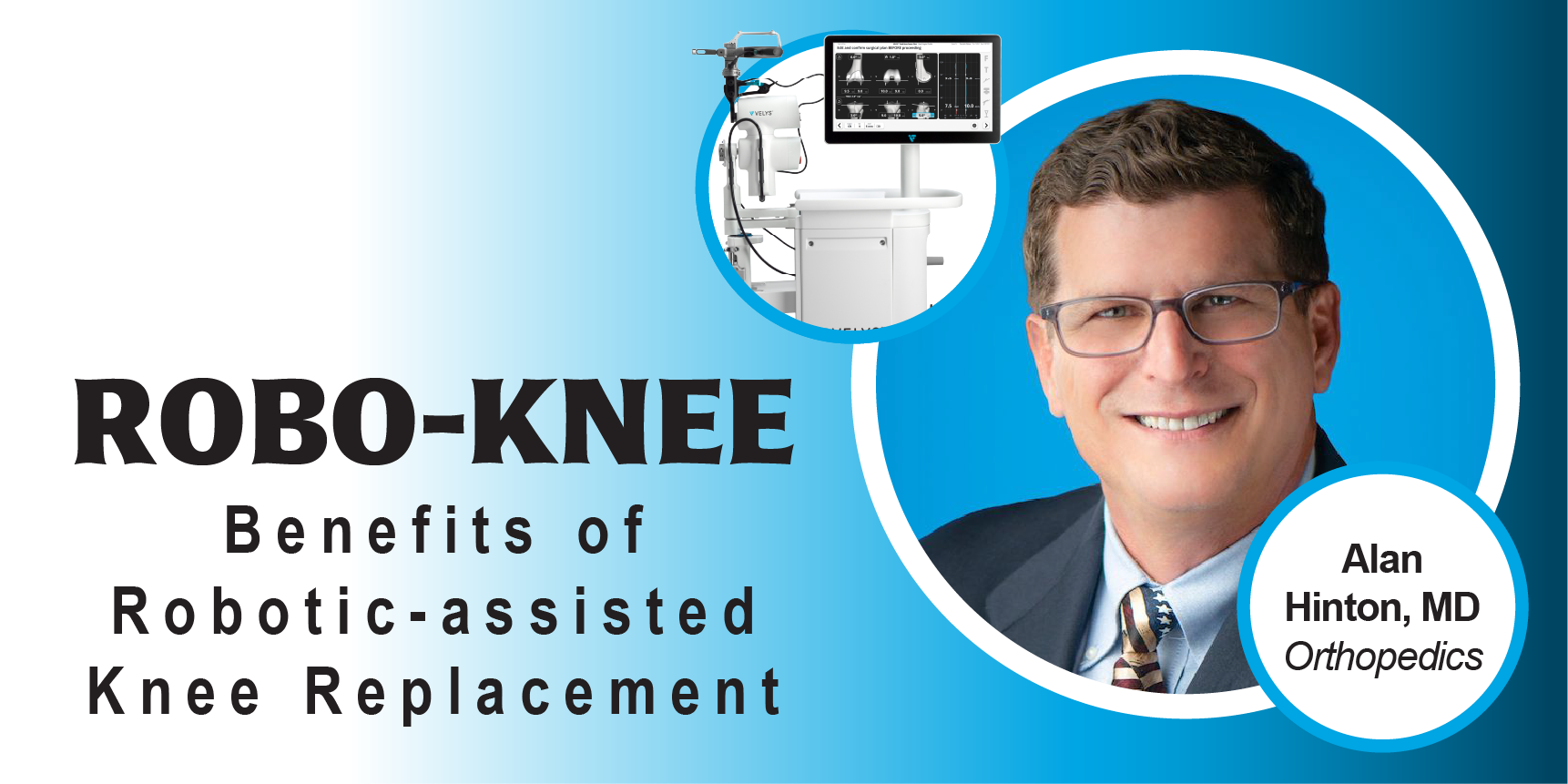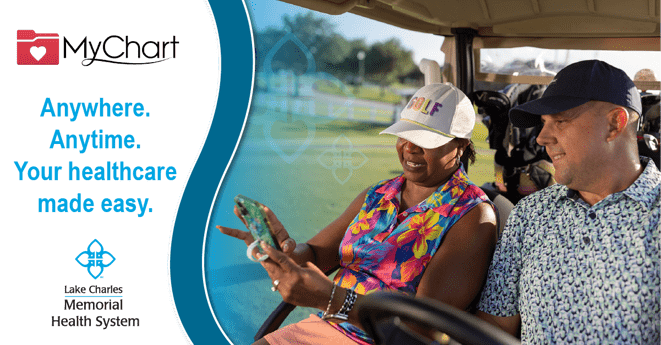Robo-Knee? Learn more about Robotic-Assisted Knee Replacement
- Category: Health Education, Education
- Posted On:
- Written By: Dr. Alan Hinton

As we get older, our bones and joints can begin to feel their age. It’s normal to feel aches and pains as we get older. However, if joint pain, especially knee pain, begins to take away from your everyday life, you don’t have to live with it – there’s something you can do about it.
The knee is the largest joint in our body and is designed to handle a large portion of the work when it comes to walking, running, and moving normally. The knees essentially bare the weight of our entire upper body. The knee joint is covered with cartilage – a smooth, cushiony surface that allows the knee joint to move without pain. Think of cartilage as the rubber sole of your shoes that cushions your feet from the hard surface we walk on. As we get older, the cartilage can begin to wear out due to normal aging, genetics, microtrauma, or knee injuries – in the same way the soles of an old pair of tennis shoes will eventually wear down.
This loss of cartilage can cause a lot of pain. As the knee “wears out,” patients can feel pain and swelling in the knee, accompanied by a feeling of the knee buckling, popping, catching, or grinding. This is a symptom of a condition called knee arthritis, which happens when the cartilage between the knee joints begins to wear away.
Patients, along with their providers, can help alleviate knee pain with injections, medications, creams and rubs, or physical therapy. These treatments treat the symptoms of knee arthritis, but as of today, there is no way to regenerate the loss of knee cartilage that is responsible for knee pain.
But there is a solution – knee replacement surgery. Knee replacement surgery is one of the most common surgeries in orthopedics. Knee replacement surgery is a procedure in which the surface of the bone is removed, and a knee implant, made of a metal cap and plastic cushion, are added in its place.
In my 30 years of practice, there have been massive improvements made in patient care and recovery for knee replacement. Rather than spending a week in the hospital post-surgery, most patients, with no complications, will be up and walking, preparing to go home the same day.
A recent advancement in knee replacement surgery is the use of robotic-assisted technology. Don’t let the title confuse you – the surgery is still performed by the hands of your surgeon. However, robotic-assisted technology allows your knee implant to be customized to your body.
No two knees are the same so choosing and fitting an implant can sometimes be a challenge that affects a patient’s recovery and pain levels. Robotic-assisted technology creates a 3D model of you within its software, giving the surgeon more information than ever before. This helps us to choose the best implant and position it within the body with very little adjustments, which in turn, reduces patients’ recovery time and pain after surgery.
Whether you have your knee replaced through traditional surgical methods or through robotic-assisted technology, the goal is to return to a life without knee pain. I tell my patients all the time that the goal is for them to forget they had the surgery because they have so little knee pain.
I’ve been fortunate to be doing this work for a long time and it’s always rewarding to see my patients come back and tell me how good they feel after surgery. I’ve seen so many patients who put off surgery for years and it has a significant effect on their overall health and wellbeing. Knee pain can be so deliberating and can bring the whole body down with it. I can speak for myself, and my talented fellow physicians at Memorial Orthopedic Specialist, when I say that we are passionate about helping our patients return to a life without joint pain.
Any surgery involves risk and the recovery from knee replacement surgery can be challenging, but the challenge is always worth the reward of the quality of life you get back when you decide that enough is enough when it comes to living with knee pain.
If you are interested in learning more, contact our office or click here to learn more about services offered at Memorial Orthopedic Specialist.




